Input interpretation

dioxathion
Chemical names and formulas
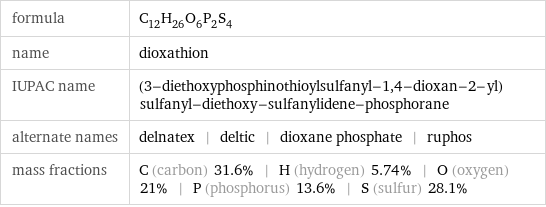
formula | C_12H_26O_6P_2S_4 name | dioxathion IUPAC name | (3-diethoxyphosphinothioylsulfanyl-1, 4-dioxan-2-yl)sulfanyl-diethoxy-sulfanylidene-phosphorane alternate names | delnatex | deltic | dioxane phosphate | ruphos mass fractions | C (carbon) 31.6% | H (hydrogen) 5.74% | O (oxygen) 21% | P (phosphorus) 13.6% | S (sulfur) 28.1%
Lewis structure
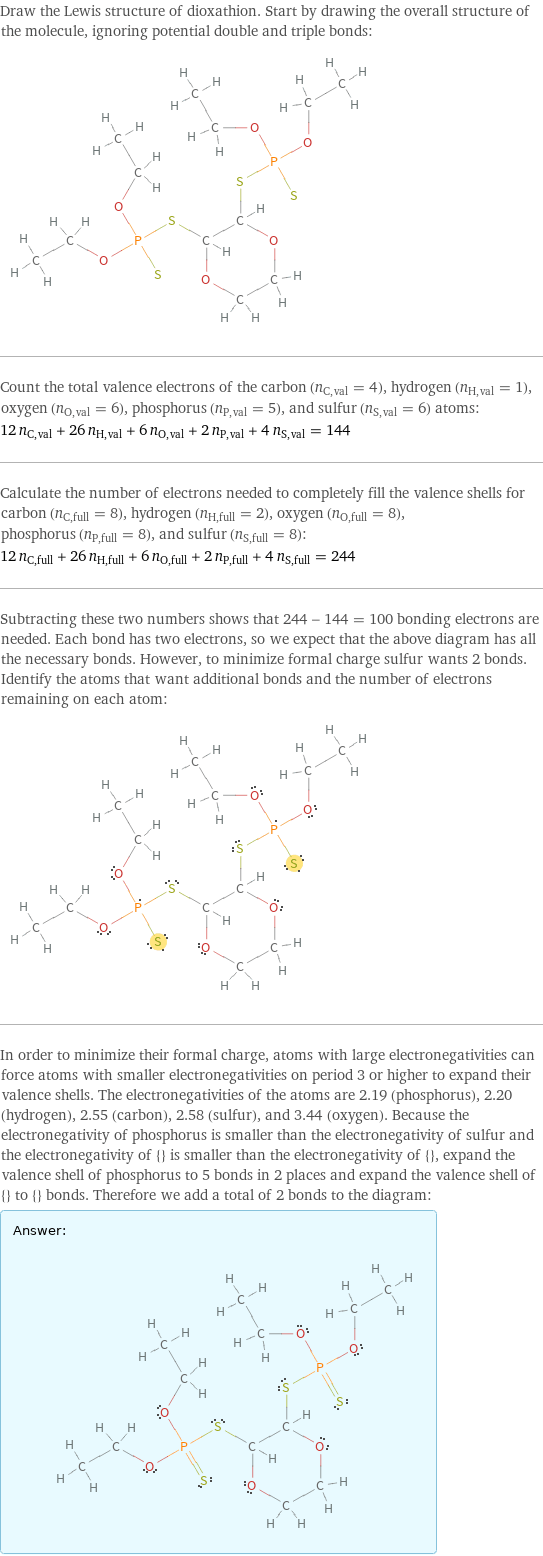
Draw the Lewis structure of dioxathion. Start by drawing the overall structure of the molecule, ignoring potential double and triple bonds: Count the total valence electrons of the carbon (n_C, val = 4), hydrogen (n_H, val = 1), oxygen (n_O, val = 6), phosphorus (n_P, val = 5), and sulfur (n_S, val = 6) atoms: 12 n_C, val + 26 n_H, val + 6 n_O, val + 2 n_P, val + 4 n_S, val = 144 Calculate the number of electrons needed to completely fill the valence shells for carbon (n_C, full = 8), hydrogen (n_H, full = 2), oxygen (n_O, full = 8), phosphorus (n_P, full = 8), and sulfur (n_S, full = 8): 12 n_C, full + 26 n_H, full + 6 n_O, full + 2 n_P, full + 4 n_S, full = 244 Subtracting these two numbers shows that 244 - 144 = 100 bonding electrons are needed. Each bond has two electrons, so we expect that the above diagram has all the necessary bonds. However, to minimize formal charge sulfur wants 2 bonds. Identify the atoms that want additional bonds and the number of electrons remaining on each atom: In order to minimize their formal charge, atoms with large electronegativities can force atoms with smaller electronegativities on period 3 or higher to expand their valence shells. The electronegativities of the atoms are 2.19 (phosphorus), 2.20 (hydrogen), 2.55 (carbon), 2.58 (sulfur), and 3.44 (oxygen). Because the electronegativity of phosphorus is smaller than the electronegativity of sulfur and the electronegativity of {} is smaller than the electronegativity of {}, expand the valence shell of phosphorus to 5 bonds in 2 places and expand the valence shell of {} to {} bonds. Therefore we add a total of 2 bonds to the diagram: Answer: | |
3D structure
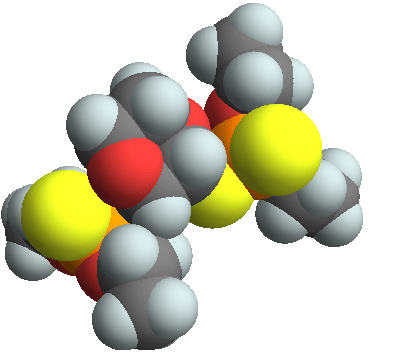
3D structure
Basic properties
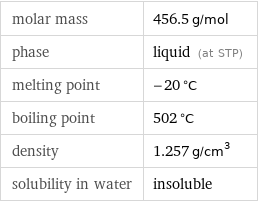
molar mass | 456.5 g/mol phase | liquid (at STP) melting point | -20 °C boiling point | 502 °C density | 1.257 g/cm^3 solubility in water | insoluble
Units

Liquid properties (at STP)
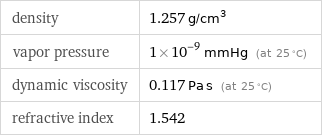
density | 1.257 g/cm^3 vapor pressure | 1×10^-9 mmHg (at 25 °C) dynamic viscosity | 0.117 Pa s (at 25 °C) refractive index | 1.542
Units

Thermodynamic properties

molar heat of vaporization | 74.4 kJ/mol specific heat of vaporization | 0.163 kJ/g (at STP)
Chemical identifiers
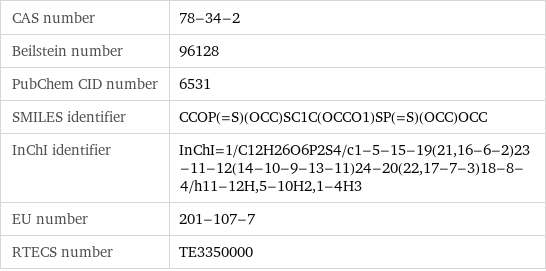
CAS number | 78-34-2 Beilstein number | 96128 PubChem CID number | 6531 SMILES identifier | CCOP(=S)(OCC)SC1C(OCCO1)SP(=S)(OCC)OCC InChI identifier | InChI=1/C12H26O6P2S4/c1-5-15-19(21, 16-6-2)23-11-12(14-10-9-13-11)24-20(22, 17-7-3)18-8-4/h11-12H, 5-10H2, 1-4H3 EU number | 201-107-7 RTECS number | TE3350000
Safety properties

flash point | 258 °C

DOT hazard class | 6.1 DOT numbers | 3018
Toxicity properties

lethal dosage | 20 mg/kg (oral dose for rats)

probable lethal dose for man | 4 mL (milliliters) long-term exposure limit | 0.2 mg/m^3 (over 8 hours) RTECS classes | agricultural chemical and pesticide | tumorigen | mutagen | human data